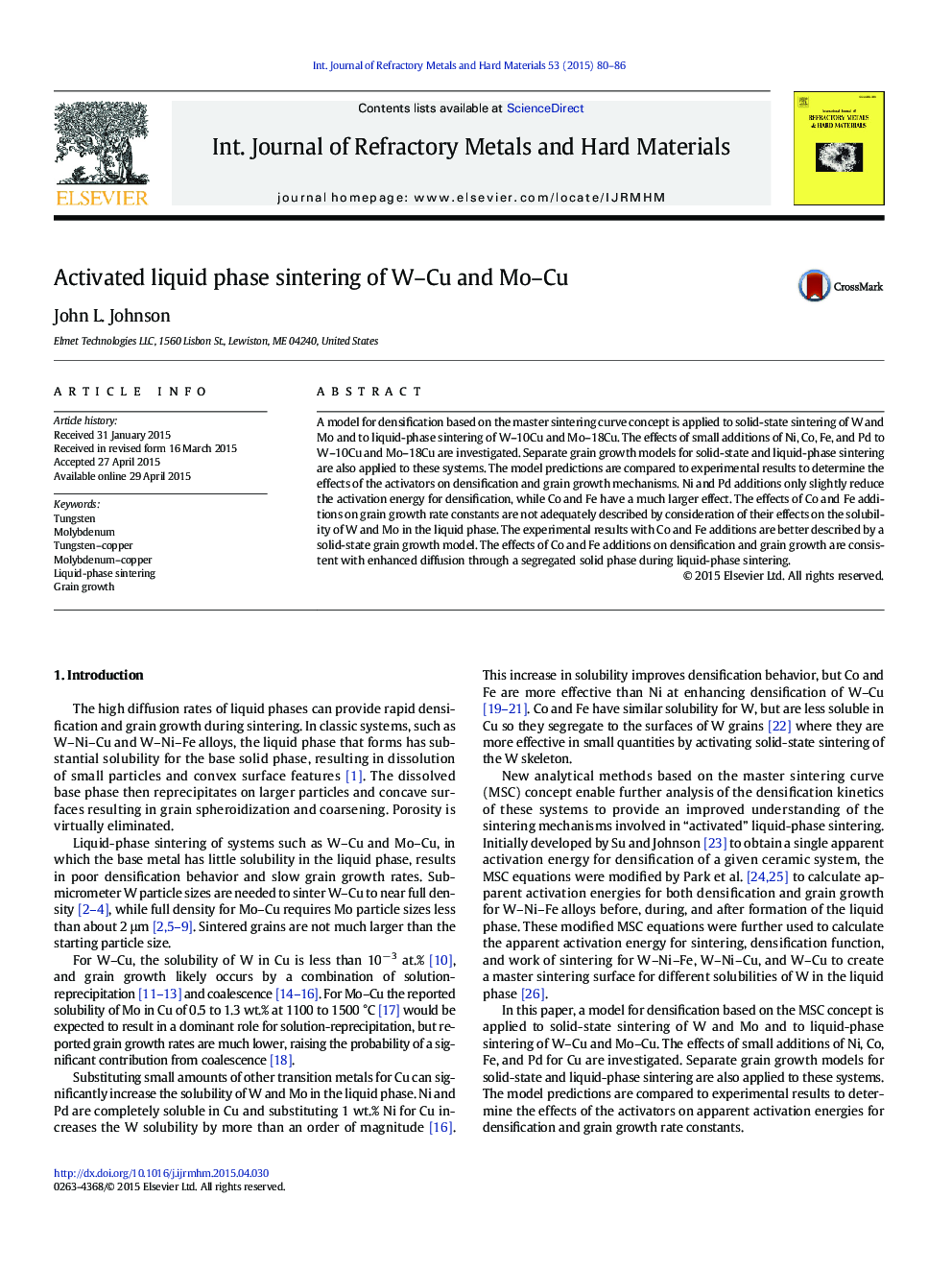| Article ID | Journal | Published Year | Pages | File Type |
|---|---|---|---|---|
| 1602913 | International Journal of Refractory Metals and Hard Materials | 2015 | 7 Pages |
•Densification of solid-state-sintered W and Mo and liquid-phase-sintered W-10Cu and Mo-18Cu was modeled.•Effects of small additions of Ni, Co, Fe, and Pd on densification and grain growth of W-10Cu and Mo-18Cu were investigated.•Ni and Pd additions only slightly reduce the activation energy for densification, while Co and Fe have a much larger effect.•Co and Fe additions affect grain growth rate constants more than predicted from higher solubility in the liquid phase.•The experimental results with Co and Fe additions are better described by a solid-state grain growth model.
A model for densification based on the master sintering curve concept is applied to solid-state sintering of W and Mo and to liquid-phase sintering of W–10Cu and Mo–18Cu. The effects of small additions of Ni, Co, Fe, and Pd to W–10Cu and Mo–18Cu are investigated. Separate grain growth models for solid-state and liquid-phase sintering are also applied to these systems. The model predictions are compared to experimental results to determine the effects of the activators on densification and grain growth mechanisms. Ni and Pd additions only slightly reduce the activation energy for densification, while Co and Fe have a much larger effect. The effects of Co and Fe additions on grain growth rate constants are not adequately described by consideration of their effects on the solubility of W and Mo in the liquid phase. The experimental results with Co and Fe additions are better described by a solid-state grain growth model. The effects of Co and Fe additions on densification and grain growth are consistent with enhanced diffusion through a segregated solid phase during liquid-phase sintering.
